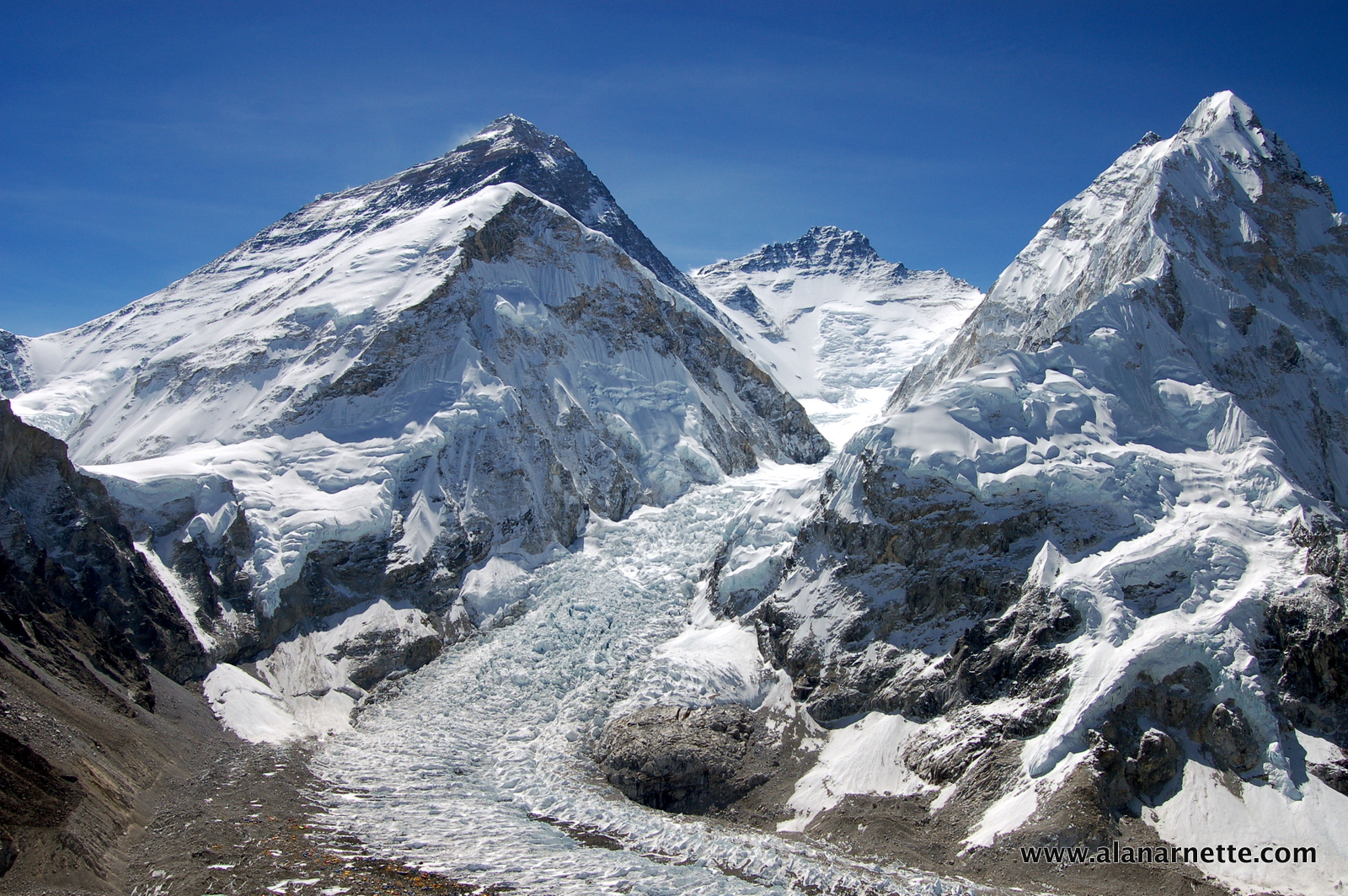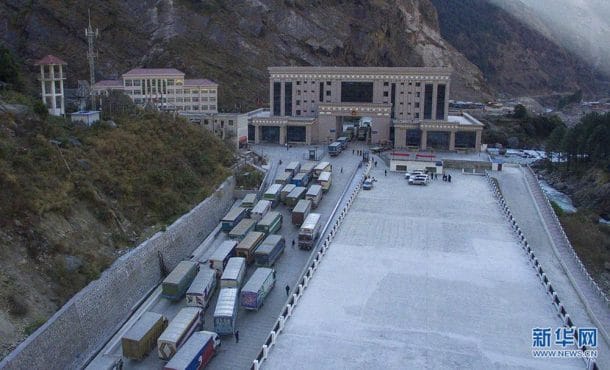Nepal’s Ministry of Tourism announced proposed changes for guiding and climbing Everest at a press conference held in Kathmandu today, August 14, 2019. They still must be approved by the Parliament before going into effect according to ChannelNewsAsia‘s website but are targeted for the 2020 spring season.
Highlights from the 59 page report included:
- Expedition companies must have a minimum of three years experience organizing high altitude climbs
before guiding on Everest. - Climbers will have to submit proof of summiting at least one 6,500 meter peak.
- Guide companies must charge a minimum of $35,000 per client. (My understanding is that this includes the current $11,000 permit fee.)
They also reiterated the current rules around have a valid health certificate and requiring the hiring of a “trained Nepali guide”. Vague language was included in the report, for example “Climbers to Sagarmatha and other 8,000 metre mountains must undergo basic and high altitude climbing training.”
Other areas addressed in the report but with little details included improvements in the rope fixing process, primarily with respect to getting the ropes in earlier and some type of improved weather forecasting system. Both of these points were highlighted during the spring 2019 season as reason for the traffic jams by the government.
The New York Times provide this quote:
“Everest cannot be climbed just based on one’s wishes,” Yogesh Bhattarai, the tourism minister, said at a news conference. “We are testing their health conditions and climbing skills before issuing climbing permits.”
Impact
The new price floor of $35,000 will likely not deter inexperienced aspirants like doubling or tripling the permit fee would have. This seems to have been a move to calm the local operators who feared a permit increase would hurt business. The median price Nepali operators charged in the spring 2019 was around $40,000 according to my polling but deep discounts regularly took the price under $30,000 and some even lower.
While a step in the right direction, the two major rules can be easily bypassed and lack teeth.
The requirement of 3 year experience guiding at “high altitude” – any Sherpa can claim to have done that – so not much of a requirement. This falls short of actually requiring “guides” to be qualified as in receiving training from a legitimate organization like the Khumbu Climbing Center or being certified by the Nepal Mountain Guide Association with UIAGM/IFMGA credentials.
“Proof” of summiting an 6500m+ peak? Well, the Indians have shown they can forge Everest summits so having a summit certificate for a 6500m peak will not be a problem. Also, they will probably delegate it to the guides who have a vested interest in signing clients. I had hoped Nepal would require a summit of an 8000-meter peak like China does before climbing on the Tibet side and have an independent agency review all applications.
High Peaks
Most long time reputable guide companies like to see Everest applicants with successful summits of Aconcagua (6962m) and Denali (6168m). The best in class require a summit of an 8000m peak like Manaslu or Cho Oyu. These are some of the more popular peaks above 6500 meters:
- Muztagh Ata, China – 7546
- Baruntse, Nepal – 7162
- Lenin Peak, Tajikistan-Kyrgyzstan – 7134
- Aconcagua, Argentina – 6962
- Ojos del Salado, Chile – 6891
- Ama Dablam, Nepal – 6856
- Huascarán Sur, Peru – 6768
Popular peaks that wouldn’t apply include:
- Mera Peak, Nepal – 6476
- Illimani, Bolivia – 6438
- Cholatse, Nepal – 6440
- Chimborazo, Ecuador – 6267
- Imja Tse aka Island Peak, Nepal – 6189
- Denali, US – 6168
- Lobuche Nepal – 6119
- Kilimanjaro, Tanania – 5895
- Elbrus, Russia 5642
- Orizaba, Mexico – 5636
- Iztaccíhuatl, Mexico – 5230
- Mont Blanc, France/Italy – 4810
- Rainier, US – 4392
Nepal has 52 peaks between 6500 and 8000 meters but the majority are serious, technical climbs and not so called “trekking” peaks. Some are sub peaks of the 8000 meter giants.
| Gyachung Kang | 7,952 | 26,089 | Khumbu Mahalangur | between Everest and Cho Oyu |
| Annapurna II | 7,937 | 26,040 | Annapurna | |
| Himalchuli | 7,893 | 25,896 | Mansiri | 18th highest |
| Ngadi Chuli | 7,871 | 25,823 | Mansiri | First ascent 1970 |
| Nuptse | 7,861 | 25,791 | Everest Group | 319 metres prominence from Lhotse |
| Dhaulagiri II | 7,751 | 25,430 | Dhaulagiri | |
| Jannu | 7,711 | 25,299 | Kumbhakarna Kangchenjunga | |
| Dhaulagiri IV | 7,661 | 25,135 | Dhaulagiri | |
| Dhaulagiri V | 7,618 | 24,993 | Dhaulagiri | |
| Annapurna III | 7,555 | 24,787 | Annapurna | |
| Jongsong Peak | 7,462 | 24,482 | Janak | #57 in the world |
| Gangapurna | 7,455 | 24,459 | Annapurna | |
| Yangra | 7,422 | 24,350 | Ganesh | |
| Kabru | 7,412 | 24,318 | Singalila Kangchenjunga | |
| Churen Himal | 7,385 | 24,229 | Dhaulagiri | |
| Kirat Chuli | 7,365 | 24,163 | Kangchenjunga | |
| Nangpai Gosum | 7,350 | 24,114 | Khumbu Mahalangur | First ascent October 12, 1986. |
| Gimmigela Chuli | 7,350 | 24,114 | First ascent 1995 | |
| Chamlang | 7,321 | 24,019 | Barun Mahalangur | #79 in the world |
| Dhaulagiri VI | 7,268 | 23,845 | Dhaulagiri | |
| Putha Hiunchuli | 7,246 | 23,773 | Dhaulagiri | |
| Langtang Lirung | 7,227 | 23,711 | Langtang | #99 in the world |
| Annapurna Dakshin | 7,219 | 23,684 | Annapurna | |
| Langtang Ri | 7,205 | 23,638 | Langtang | #106 in the world |
| Chamar | 7,187 | 23,579 | Sringi | First ascent 1953 |
| Melungtse | 7,181 | 23,560 | Rolwaling | First ascent 1988 |
| Pumori | 7,161 | 23,494 | Khumbu Mahalangur | First ascent 1962 |
| Nemjung Manang | 7,140 | 23,425 | First ascent 1983 | |
| Gaurishankar | 7,134 | 23,406 | Rolwaling | First ascent 1979 |
| Tilicho Peak | 7,134 | 23,406 | Annapurna | First ascent 1979 |
| Api | 7,132 | 23,399 | Yoka Pahar Gurans | First ascent 1960 |
| Baruntse | 7,129 | 23,389 | Barun Mahalangur | First ascent 1954 |
| Nilgiri | 7,061 | 23,166 | Nilgiri Annapurna | First ascent 1962 |
| Saipal | 7,031 | 23,068 | Saipal Gurans | |
| Machapuchare | 6,993 | 22,943 | Annapurna | Sacred mountain, unclimbed |
| Kang Guru | 6,981 | 22,904 | Larkya or Peri | 2005 avalanche kills 18 |
| Dorje Lakpa | 6,966 | 22,854 | Langtang | |
| Kanjiroba | 6,883 | 22,582 | Kanjiroba Himal | |
| Kubi Gangri | 6,859 | 22,503 | Himalayas | |
| Jethi Bahurani | 6,850 | 22,474 | Himalayas | |
| Ama Dablam | 6,812 | 22,349 | Barun Mahalangur | “Mother and her necklace” |
| Kangtega | 6,782 | 22,251 | Barun Mahalangur | First ascent 1963 |
| Cho Polu | 6,735 | 22,096 | Barun Mahalangur | First ascent 1999 |
| Changla | 6,721 | 22,051 | Himalayas | |
| Lingtren | 6,714 | 22,028 | Khumbu Mahalangur | First ascent 1935 |
| Num Ri | 6,677 | 21,906 | Barun Mahalangur | First ascent 2002 |
| Khumbutse | 6,640 | 21,785 | Khumbu Mahalangur | First mountain west of Everest |
| Thamserku | 6,623 | 21,729 | Barun Mahalangur | First ascent 1964 |
| Pangboche | 6,620 | 21,719 | Kutang Himal | |
| Dragmarpo Ri | 6,578 | 21,581 | Langtang | Unclimbed |
| Taboche | 6,542 | 21,463 | Khumbu Mahalangur | First ascent 1974 |
| Singu Chuli | 6,501 | 21,329 | Annapurna | Trekking peak |
We will see if this make any difference. It will all come down to enforcement and thus far the Nepal government, and guides, have not shown they can do that.
Climb On!
Alan
Memories are Everything




5 thoughts on “New Everest Climber and Guide Requirements”
I’m guessing that Singu Chuli is about to become very very popular!
Hi Alan,
Did you manage to get hold of the 59 page report? I would be interested in reading the whole thing. Neither the CNA nor NYT articles contain links to it.
I agree with you that the 6500m requirement should be 8000m. There should also be a proper, fully assessed certification and licensing scheme for operators, instead of some arbitrary 3 year rule for experience. Am I right in thinking there is also no mention of limiting the number of permits, which is badly needed?
But perhaps more to the point, do you think any of this will happen, or is this just another silly announcement that won’t be enforced?
Will it happen? Consistent with previous “Silly Rules” announcements by the Ministry, they have already achieved their goal – there are many, many global media headlines saying the “Nepal acts to make Everest Safer.”
The real issue is enforcement. These are not bad ideas but who will enforce them? The same people that are complicit in forging permits and summit certificates?
Here is the report … in Nepali
Haha, thanks Alan. My Nepali reading skills aren’t quite there yet, but
I have extra respect for the guy at NYT who wrote the article 😉
They had someone at the press conference.
Comments are closed.